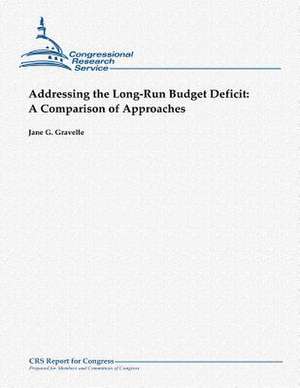Addressing the Long-Run Budget Deficit
Autor Jane G. Gravelleen Limba Engleză Paperback
Preț: 100.35 lei
Nou
Puncte Express: 151
Preț estimativ în valută:
19.20€ • 20.05$ • 15.89£
19.20€ • 20.05$ • 15.89£
Carte disponibilă
Livrare economică 14-28 martie
Preluare comenzi: 021 569.72.76
Specificații
ISBN-13: 9781481907835
ISBN-10: 1481907832
Pagini: 42
Dimensiuni: 216 x 280 x 2 mm
Greutate: 0.12 kg
Editura: CREATESPACE
ISBN-10: 1481907832
Pagini: 42
Dimensiuni: 216 x 280 x 2 mm
Greutate: 0.12 kg
Editura: CREATESPACE
